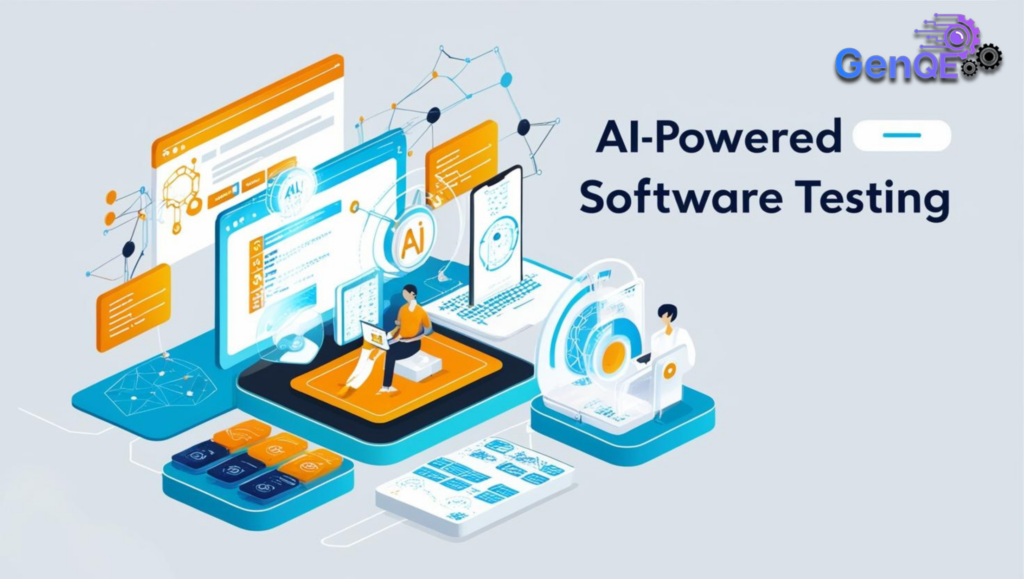
Introduction
The rapid evolution of software development has placed immense pressure on quality assurance (QA) teams to ensure that applications are fast, reliable, and bug-free. Traditional testing methods, while effective in their time, are increasingly struggling to keep pace with Agile development, DevOps pipelines, and the complexities of modern software architectures.
This is where Artificial Intelligence (AI) is revolutionizing software testing. AI-driven testing goes beyond basic automation, incorporating machine learning, predictive analytics, and self-healing test scripts to make testing more intelligent, efficient, and adaptive.
In this article, we’ll explore how AI is reshaping the QA landscape, the key benefits of AI-powered testing, and what the future holds for AI-driven quality assurance.
The Evolution of Software Testing
1️⃣ From Manual Testing to Automation
Before AI entered the scene, software testing evolved through two major phases:
- Manual Testing: Testers manually executed test cases, which was time-consuming and prone to human error.
- Automated Testing: With the rise of Selenium, JUnit, and TestNG, automation reduced manual effort but still required significant maintenance and scripting.
While automation improved efficiency, it could not intelligently adapt to application changes, nor could it predict defects before they occurred.
2️⃣ The Rise of AI in Software Testing
AI-powered testing brings the next major evolution by making tests:
- Autonomous – AI can self-execute and self-optimize test cases.
- Predictive – AI forecasts potential failures based on historical data.
- Self-healing – AI detects changes in UI elements and updates test scripts automatically.
By leveraging machine learning, deep learning, and natural language processing (NLP), AI transforms software testing into a proactive, intelligent process rather than a reactive one.
How AI is Transforming Software Testing
1️⃣ AI-Powered Test Case Generation
One of the biggest challenges in software testing is creating comprehensive test cases that cover all possible scenarios. AI simplifies this process by:
- Analyzing application code and user behavior to generate test cases automatically.
- Identifying gaps in test coverage to ensure critical functionalities are tested.
- Predicting high-risk areas where defects are likely to appear.
Example:
AI-powered tools can scan an application’s past defect history and automatically generate test cases to prevent similar issues in the future.
2️⃣ Predictive Defect Analysis
AI can predict defects before they happen by analyzing:
- Historical bug reports and code changes
- Test execution trends over multiple software releases
- User behavior patterns and application logs
By assigning risk scores to different parts of the application, AI helps testers focus their efforts on the most critical areas, reducing overall testing time.
Example:
If a previous software version had frequent login failures due to session timeouts, AI can identify similar patterns in new code updates and flag potential issues before release.
3️⃣ Intelligent Test Automation Optimization
Traditional automated tests often break when UI elements change, leading to high maintenance costs. AI optimizes test automation by:
- Self-healing test scripts that automatically adjust to UI changes.
- Dynamic test execution that prioritizes high-impact test cases first.
- Reducing redundant test cases to speed up test cycles.
Example:
If a web application’s “Login” button ID changes from btn_login to login_button, AI can detect the change and update test scripts without human intervention.
4️⃣ AI-Driven Exploratory Testing
Unlike traditional testing, where testers follow predefined steps, AI-driven exploratory testing uses machine learning to:
- Simulate real-world user interactions to uncover hidden bugs.
- Identify edge cases that traditional scripts might miss.
- Analyze application response times and performance bottlenecks.
This type of testing is especially valuable for UI/UX validation and security testing, where unexpected user behavior can trigger failures.
Example:
AI-driven exploratory testing can simulate a scenario where multiple users log in simultaneously to detect concurrency issues before they impact real users.
5️⃣ AI-Powered Visual Testing
AI enhances UI/UX testing by detecting visual inconsistencies across different browsers and devices.
- Pixel-based analysis helps identify even minor UI differences.
- AI compares screenshots and highlights visual mismatches automatically.
- Ensures branding consistency across different platforms.
Example:
An AI tool can detect if a button renders incorrectly on mobile screens but appears fine on desktops, ensuring consistent user experience across devices.
Benefits of AI-Powered Testing
✅ Faster Testing Cycles
AI reduces manual effort and maintenance, accelerating test execution and delivery.
✅ Improved Test Accuracy
With self-learning algorithms, AI minimizes false positives and false negatives, ensuring more reliable results.
✅ Cost Savings
AI eliminates the need for constant test script updates, reducing QA costs in the long run.
✅ Broader Test Coverage
AI dynamically generates new test cases, covering scenarios human testers might overlook.
✅ Better Software Quality
AI-powered defect prediction reduces production failures, leading to higher-quality releases.
Challenges in AI-Based Testing
Despite its benefits, AI-driven testing has some challenges:
⚠️ Initial Investment Costs
Implementing AI-powered testing requires skilled resources, AI tools, and training datasets, which can be costly.
⚠️ Need for High-Quality Data
AI models rely on large, well-labeled datasets. Poor data quality can lead to inaccurate predictions.
⚠️ Limited Human Oversight
AI automates many tasks, but human intervention is still needed to validate AI-generated results and ensure meaningful test execution.
⚠️ Tool Compatibility Issues
Many AI testing tools don’t seamlessly integrate with existing DevOps pipelines, requiring custom implementations.
The Future of AI in Software Testing
AI’s role in software testing is expected to grow significantly, with emerging trends such as:
- 🧠 AI-Driven Code Reviews – AI suggesting optimizations before code is merged.
- 🚀 Fully Autonomous Testing – AI managing test execution without human input.
- 🔎 AI-Powered Root Cause Analysis – AI pinpointing the exact cause of failures.
- 📊 AI-Enhanced Test Analytics – AI providing real-time dashboards for test insights.
Companies that embrace AI-driven testing today will lead the way in delivering higher-quality, faster, and more cost-effective software in the future.
Conclusion
AI is not just another automation tool—it is a game-changer in software testing.